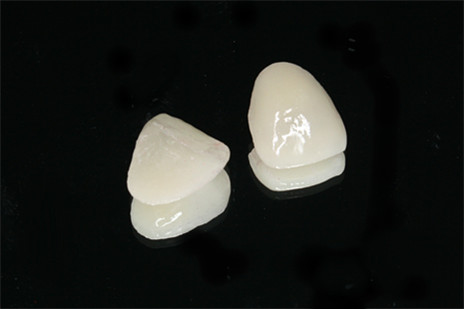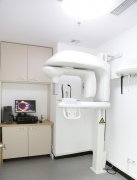HOTLINE:010-65959916
Cosmetic Dentistry
time:2016-03-01 09:07 click:
 Cosmetic dentistry is generally used to refer to any dental work that improves the appearance (though not necessarily the function) of a person's teeth, gums and/or bite. It primarily focuses on improvement dental aesthetics in color, position, shape, size, alignment and overall smile appearance. Many dentists refer to themselves as "cosmetic dentists" regardless of their specific education, specialty, training, and experience in this field. This has been considered unethical with a predominant objective of marketing to patients. The American Dental Association does not recognize cosmetic dentistry as a formal specialty area of dentistry. However, there are still dentists that promote themselves as cosmetic dentists.
Cosmetic dentistry is generally used to refer to any dental work that improves the appearance (though not necessarily the function) of a person's teeth, gums and/or bite. It primarily focuses on improvement dental aesthetics in color, position, shape, size, alignment and overall smile appearance. Many dentists refer to themselves as "cosmetic dentists" regardless of their specific education, specialty, training, and experience in this field. This has been considered unethical with a predominant objective of marketing to patients. The American Dental Association does not recognize cosmetic dentistry as a formal specialty area of dentistry. However, there are still dentists that promote themselves as cosmetic dentists.Cosmetic dentistry may involve:
1. the addition of a dental material to teeth or gums – examples: bonding, porcelain veneers (laminates), crowns (caps), gum grafts
2. the removal of tooth structure or gums – examples: enameloplasty, gingivectomy
3. neither adding nor removing dental materials, tooth structure, or gums – examples: teeth whitening (bleaching), laser whitening, gum depigmentation
4. straightening of teeth accompanied by improvement in appearance of face – orthodontics
Examples
• Whitening, or "tooth bleaching", is the most common cosmetic dental procedure. While many whitening options are now available, including over the counter products, dentist-supervised treatments remain the recommended procedures for lightening discolored teeth.
• Laser whitening is a teeth whitening technique in which gums are covered with rubber and a bleaching chemical is applied on the teeth. A beam of argon laser, which is intended to accelerate the process of bleaching, is then projected upon the teeth. This laser activates the bleaching chemical and lightens the teeth color. Laser whitening is said to be six times more effective in teeth whitening compared to other procedures.
• Tooth reshaping removes parts of the enamel to improve the appearance of the tooth. It may be used to correct a small chip, or to alter the length, shape or position of teeth, as well as when there is tooth size discrepancy; it can be used to correct crooked or excessively long teeth. The removed enamel is irreplaceable, and may sometimes expose dentin. It is also known as enameloplasty, odontoplasty, contouring, recontouring, slenderizing, stripping. This procedure offers fast results and can even be a substitute for braces under certain circumstances.
• Bonding is a process in which an enamel-like dental composite material is applied to a tooth's surface, sculpted into shape, hardened and then polished.
• Dental bridges are false teeth, known as a pontics, which are fused between two porcelain crowns to fill in areas left by missing teeth. Two crowns hold it in place, these are attached to adjacent sides of the false tooth. This is known as a fixed bridge. This procedure is used to replace one or more missing teeth. Fixed bridges cannot be taken out in the same way that partial dentures can. In areas of the mouth that are under less stress, such as the front teeth, a cantilever bridge may be used. Cantilever bridges are used when there are teeth on only one side of the open space. Bridges require commitment to serious oral hygiene and carry risk. The average life of bridges is similar to that of crowns which is nearly ten years.
• Veneers are ultra-thin, custom-made porcelain laminates that are bonded directly to the teeth. They are an option for closing gaps, enhance the shape, or change the color of teeth that do not respond well to whitening procedures. In the majority of the cases, some level of tooth reduction is necessary for optimal results.
• Dental Implants are prosthetic replacements for missing teeth. According to ICOI (International Congress of Oral Implantologists) there are commonly three parts to what it is described as an implant: the implant device which is predominantly made of titanium (which is inserted into the bone), the abutment, and a dental crown or a denture which are connected to the implant through the abutment.
• Gum lift is a cosmetic dental procedure that raises and sculpts the gum line. The procedure involves reshaping the tissue and/or underlying bones to create the appearance of longer or more symmetrical teeth.
• Bite Reclamation is for patients who have had years of excessive wear to their teeth due to grinding or acid reflux can alter their vertical dimension. This gives them a closed or shorter look to their face and smile. By opening up their bite, a qualified professional can reclaim their vertical dimension.
Previous:Cosmetic Dental







